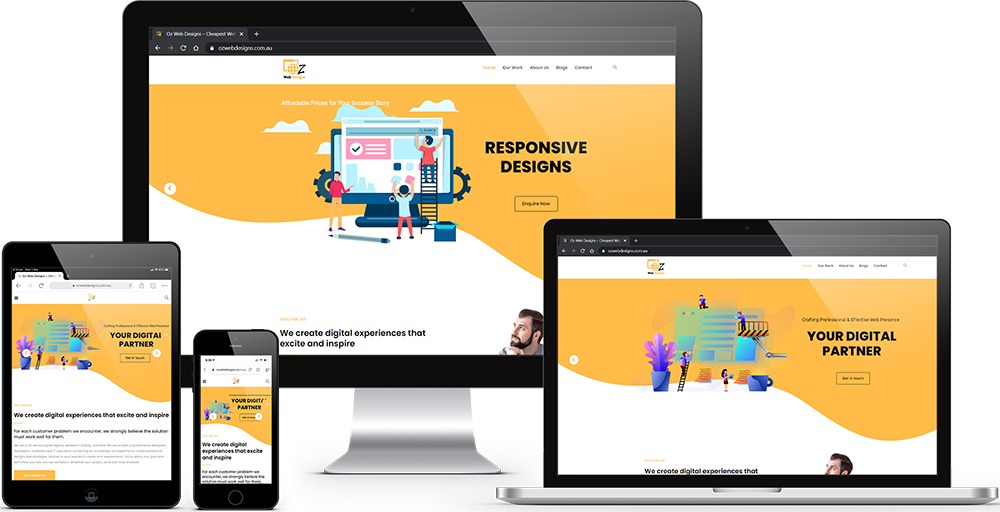In the world of website design, competition can be intense. Whether you’re a freelancer or an agency owner, standing out among the sea of other talented designers is essential to attract clients and grow your business. Here’s a guide on how to tackle business competition in the website design industry, from honing your brand to building lasting client relationships.
1. Define Your Unique Selling Proposition (USP)
- Identify Your Strengths: Think about what sets you apart from other designers or agencies. Do you specialize in a particular industry, style, or technology? Your USP could be anything from exceptional mobile optimization to a talent for storytelling through design.
- Highlight Your Value: Beyond your skills, what value do you provide? Perhaps it’s your quick turnaround time, commitment to SEO, or dedication to accessibility. Your value proposition should be clear and compelling, positioning you as the best choice for your ideal clients.

2. Build a Strong Online Presence
- Create an Impressive Portfolio: Your website should be a showcase of your best work. Potential clients will judge your capabilities based on what they see, so keep your portfolio updated and include case studies that illustrate the results you’ve achieved.
- Optimize for SEO: Many clients start their search for a designer online. Optimizing your website for keywords related to website design, UI/UX, and your location can improve your search visibility. Consider blogging on relevant topics, as this can also boost your SEO.
- Leverage Social Media and Platforms: Platforms like LinkedIn, Instagram, and Dribbble are great for showcasing your work and connecting with potential clients. Regularly posting insights, tips, and snippets of your latest designs can establish you as an expert and keep you top of mind.
3. Understand Your Competitors
- Analyze Their Offerings: Visit competitors’ websites and check their portfolios, client lists, and services. Identify what they do well and where they might be lacking. This helps you find gaps that you can fill or aspects you can improve on.
- Examine Their Pricing: Understanding how your competitors price their services can help you position yourself effectively. It doesn’t mean you need to undercut them; instead, focus on the value and results you provide to justify your rates.
- Differentiate Your Style and Approach: Clients look for designers whose style resonates with their brand. Use your website and social media to highlight your unique design style, process, and approach.
4. Focus on Building a Niche
- Specialize in an Industry or Style: If you’re skilled in a specific type of design, such as e-commerce websites, non-profit designs, or minimalist aesthetics, embrace that niche. Clients in these fields will be more inclined to choose someone with proven expertise in their area.
- Develop Industry Knowledge: Go beyond design and learn about the industries you serve. This knowledge can be a huge selling point, as clients will feel more confident working with someone who understands their market’s challenges and goals.
5. Prioritize Client Experience
- Communicate Clearly and Often: From the first inquiry to the final delivery, communication is key. Keep clients updated throughout the project, respond to questions promptly, and explain design choices in a way that’s easy to understand.
- Deliver More Than Expected: Aim to exceed client expectations by offering additional services, like setting up analytics or providing a few extra design elements. Small gestures can leave a big impression and often lead to repeat business or referrals.
- Gather Feedback and Testimonials: After completing a project, ask clients for feedback and a testimonial. Positive reviews not only boost your credibility but can also help reassure potential clients who are considering your services.
6. Offer Flexible Pricing and Packages
- Create Tiered Packages: Offering packages at different price points can help you appeal to a wider range of clients. For instance, a basic package could include only essential pages, while a premium package might offer custom animations and SEO services.
- Be Transparent About Pricing: Being upfront about your prices (or at least a range) can attract serious inquiries and build trust. If clients have to request pricing, be ready to explain the value they’ll receive at each price level.
- Consider Retainers and Ongoing Services: Many clients may need long-term support for updates, security, or SEO. Offering maintenance packages can be a great way to secure ongoing revenue and maintain a relationship with clients.
7. Stay on Top of Design Trends and Technology
- Continuous Learning: Keep improving your skills by learning new design software, staying up-to-date with web standards, and exploring new trends in UI/UX.
- Experiment with Cutting-Edge Tech: Familiarize yourself with new tools or features, like AI-driven design tools, progressive web apps (PWAs), or interactive elements. Clients appreciate designers who can provide forward-thinking solutions.
- Attend Conferences and Workshops: Events like Awwwards Conferences, Adobe MAX, or UX Design Summits offer invaluable insights into the industry and allow you to network with other professionals. You can also use this knowledge as a selling point to clients, as it shows your commitment to staying relevant.
8. Build Relationships and Network
- Collaborate with Other Creatives: Partnering with other designers, developers, or agencies can help you gain referrals and reach a broader audience. For example, a graphic designer might refer clients to you for website development.
- Network Locally and Online: Join professional groups, attend local business events, and engage in online communities. Building a network can often lead to referrals and new client opportunities.
- Engage Past Clients: Send occasional check-ins or updates to past clients. This could lead to additional work or referrals if they have friends or colleagues in need of a website designer.
9. Focus on Delivering Quality
- Emphasize Usability and Performance: Clients want websites that look good and perform well. Prioritize load times, responsive design, and user experience to deliver a polished final product.
- Ensure Accessibility: Making your websites accessible to all users can be a huge differentiator, as not all designers prioritize this. It’s also a value add that clients will appreciate, especially as accessibility standards become more critical.
- Refine Your Process: A streamlined design and development process enables you to work more efficiently, which means more time for quality control and revisions. Over time, your refined process will be a competitive advantage, leading to higher client satisfaction.
10. Embrace Customer-Centric Marketing
- Showcase Client Success Stories: Instead of focusing solely on your design skills, use testimonials and case studies to demonstrate the value you bring. Show how your designs have helped clients increase conversions, improve user engagement, or achieve other goals.
- Provide Free Resources: Offering resources like guides or templates can attract potential clients, showcase your expertise, and improve your SEO. For example, you might create a “Guide to Website Redesign for Small Businesses” that brings in visitors who could convert into clients.
- Leverage Email Marketing: Start a newsletter to share tips, insights, and updates about your services. This can keep you in front of potential clients and establish you as a trusted authority.




